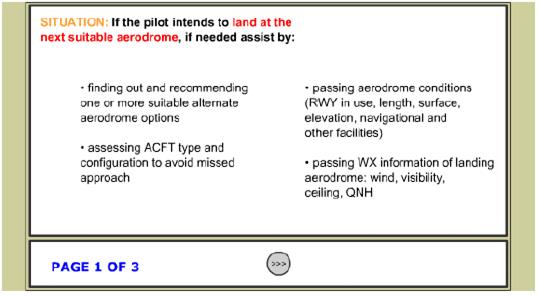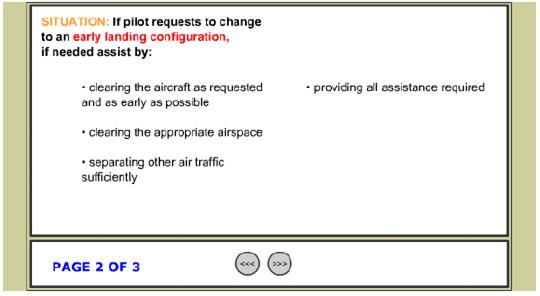Single engine aircraft
· check fuel selector · check mixture · check boost pump · check magnetos
Engine fire may be caused by ingestion of debris, electrical problems, engine failure, or birdstrike.
IF NEEDED: Assist by informing the pilot about: · next suitable aerodrome · aerodrome details as soon as possible: RWY in use, length, surface, elevation · WX information at landing aerodrome: wind, visibility, ceiling, QNH
· fuel selector is off · they have checked mixture (fuel cut off??) · fuel pump is off · cabin heating and venting is off · they have checked their glide speed limit
The minimum amount of fuel for an IFR flight is prescribed by ICAO (Annex 6). This is called the 'Minimum Take-Off Fuel (MTOF)'. If an alternate aerodrome is required: the MTOF contains enough fuel to reach the destination aerodrome, thence to an alternate aerodrome and thereafter for 45 minutes, plus an additional contingency of 15%.
If no alternate aerodrome is required: the MTOF contains enough fuel to reach the destination aerodrome, thereafter for another 45 minutes, plus an additional contingency of 10%.
Any additional carried fuel is called EXTRA FUEL.
IF NEEDED: Assist by informing the pilot about:
· The location of the nearest suitable aerodrome. · ATC should also provide details of the aerodrome as soon as possible: o RWY in use o length o surface o elevation o ILS and NAV frequencies · WX information should also be provided: o wind o visibility o ceiling o QNH
In event of gear problems, REMEMBER: · Follow the ASSIST code of practice A 'Acknowledge' - S 'Separate' - S 'Silence' - I 'Inform' - S 'Support - T 'Time' (See the ASSIST panel on the bottom left for further information.)
· · Keep the safety strip clear. · Check if the towing equipment is on standby.
ATC should also prepare for a LOW PASS of the aircraft to allow a visual inspection of the landing gear and the area around it. • Technical assistance will be required e.g. a specialist engineer or another pilot. IF NEEDED: Assist by informing the pilot about:
In case of a manual gear extension not working, the pilot could attempt a g-load-extension whereby a sharp change in altitude is used to force the gear down. Retracting the gear is impossible after a manual gear release so extra drag should be factored into any ATC calculations.
Having consulted with a specialist engineer, inform the pilot about the aircraft configuration, e.g. gear appears down / gear doors closed. The pilot could check the bulbs are working on the gear extension indicator. Has the pilot contacted maintenance?
In the event of hydraulic problems, REMEMBER:
· Follow the ASSIST code of practice A 'Acknowledge' - S 'Separate' - S 'Silence' - (See the ASSIST panel on the bottom left for further information.) · Informing your supervisor · Informing the alternate landing aerodrome, if one is to be used · Increasing vertical and lateral separation · Monitoring the progress of the flight on radar REMEMBER:
· Asking if dangerous goods on board · Asking for the number of Persons On Board (POB) · Avoiding ATC-caused go around
REMEMBER:
· Clear RWY in accordance with local instructions. This may vary from aerodrome to aerodrome. · Keeping safety strip clear · Safety services on standby · Checking if towing equipment on stand by
IF NEEDED:
Assist by informing the pilot about: · The location of the nearest suitable aerodrome. · ATC should also provide details of the aerodrome as soon as possible: o RWY in use o Length o Surface o Elevation o ILS and NAV frequencies · WX information may be provided also: o Wind o Visibility o Ceiling o QNH · Fire or smoke at brakes · Pilot should notify that ready for approach, "possibility of expecting long final".
Icing may also have an impact on the controllability of the aircraft: · · An immediate change of level and/or heading may occur. · Higher speeds may result.
REMEMBER:
IF NEEDED: Assist by informing the pilot about:
The pilot should check whether the following anti-icing and de-icing systems are on: · Pitot heating · Stall warner heating · Carburettor heating · Propeller heating / de-icing · Wing anti-ice / de-ice · Alternate air supply · Windshield heating They may also try a descent with higher power setting to increase bleed air supply. A higher approach/landing speed could compensate for a possible increase of weight. Partial or no flap settings on approach and landing could be tried to combat a possible increase of stalling speed.
The cause of smoke in the cockpit is generally a short circuit or other electrical malfunctions. Such problems may quickly escalate into an increase of the smoke or even fire.
In the event of smoke or poisonous gases, the crew will put on oxygen masks. The ability of the crew to read cockpit instruments and see outside the aircraft may be limited considerably.
IF NEEDED:
Assist by informing the pilot about:
· · availability of automatic approach low visibility procedure · details of landing aerodrome o RWY in use o Length, surface, elevation, ILS and NAV frequencies o WX information at landing aerodrome: wind, visibility, ceiling, QNH
REMEMBER:
This is because the initial communication by the pilot may have been made without the hijacker's knowledge. If a hijack squawk code is received, ATC should check the transponder setting: NO REPLY shall be taken as confirmation of the A7500 squawk. Absense of a reply shall not be taken as an indication that the squawk was set by mistake. ATC should also attempt to provide any information requested.
The crews are trained to handle such situations and there is a bomb search checklist on board.
In order to reduce the effect of a possible explosion, the following procedures are followed if a foreign object is found in the cabin: · the object is placed at the bottom of a rear door · the object is covered in all available blankets, cusions and other soft materials
In the event of a bomb warning, ATC is the most direct point of contact with the pilot and crew. Therefore, much of the coordination and official counter measure planning will be relayed through the controller talking to the pilot. Controllers should relay verbatim instructions or advice passed by authorised persons for transmission to the aircraft All procedures will be executed according to local instructions as contained in the local alarm plans.
Implications of a bomb warning:
· The pilot may bring the aircraft into landing configuration early, as any explosion may reduce subsequent manoeuvrability. · Aircraft in landing configuration are less manoeuvrable, slower and do not allow any steep manoeuvres. · The pilot may require to land at the next suitable aerodrome. · The passengers and crew may need to be evacuated after landing.
|























 For private pilots assist by enquiring if
For private pilots assist by enquiring if













































 Clear the runway according to local instructions.
Clear the runway according to local instructions.




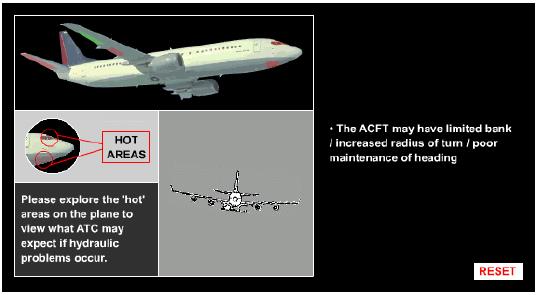



 Assist resolution of the situation by:
Assist resolution of the situation by: Assist resolution of the situation by:
Assist resolution of the situation by:



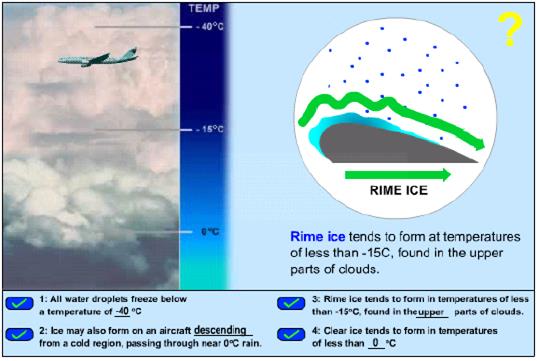









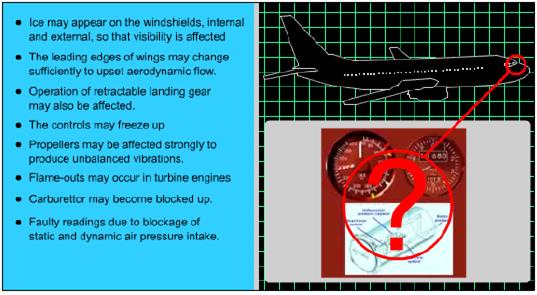
 There may be limitations in rate of climb or descent.
There may be limitations in rate of climb or descent.
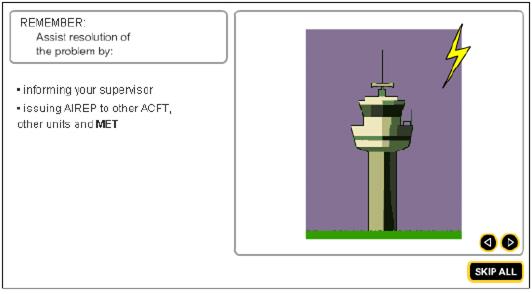






 Smoke or fire in the cockpit is a serious situation which may lead to an emergency. An emergency descent and immediate landing may then be required.
Smoke or fire in the cockpit is a serious situation which may lead to an emergency. An emergency descent and immediate landing may then be required.
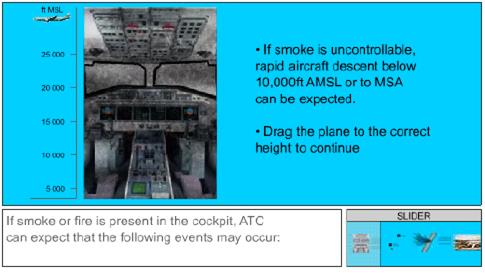
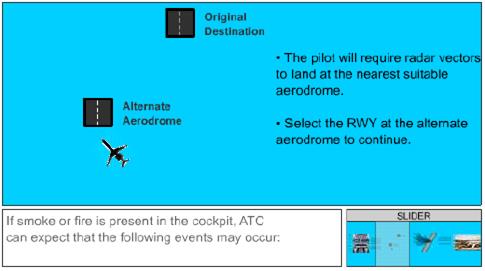


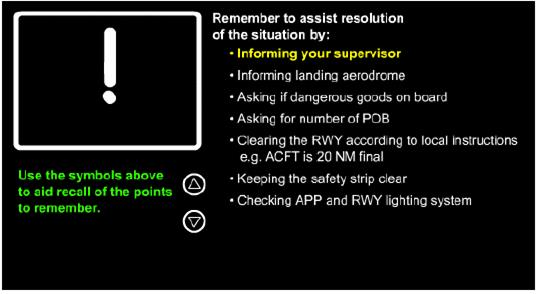
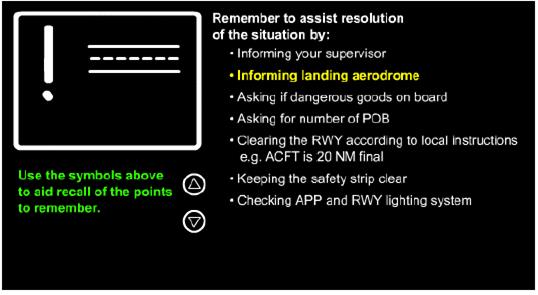




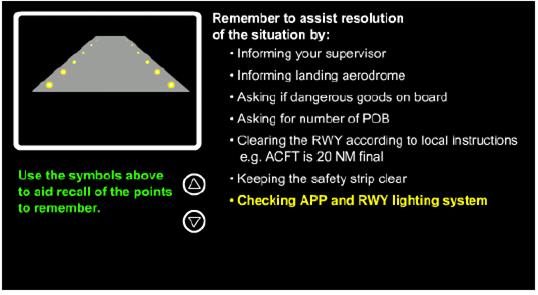

 track until touchdown at next suitable aerodrome
track until touchdown at next suitable aerodrome








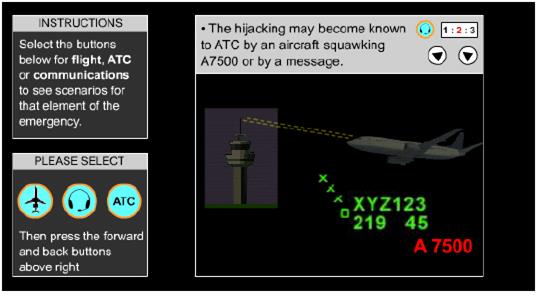


 It is important to remember not to make any further RTF unless initiated by the pilot.
It is important to remember not to make any further RTF unless initiated by the pilot. Although most cases of this modern form of terrorism are false alarms, ALL must be taken seriously until proved to be a hoax.
Although most cases of this modern form of terrorism are false alarms, ALL must be taken seriously until proved to be a hoax.





